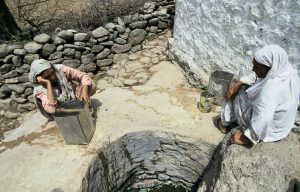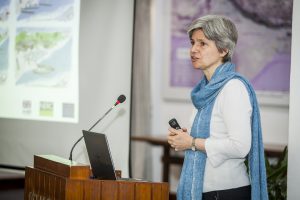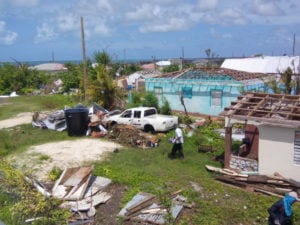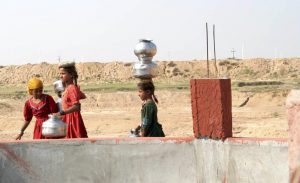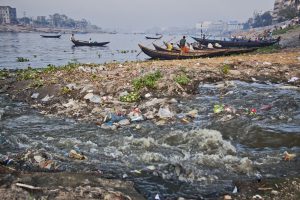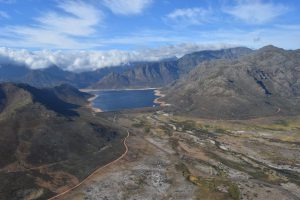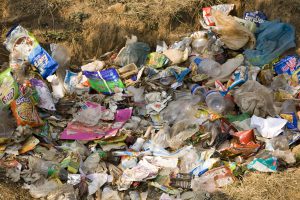Karachi, with a core population of 13 million and another 4 million living around it, is Pakistan’s most populated city, and the twentieth most populated urban centre in the world. It has always struggled to keep its streets clean. No reliable data exists on the exact amount of garbage generated, but officials quote a figure of approximately 13,000 tonnes a week. Most of this ends up on the streets, and the judiciary has now been dragged in. Hearing a civil rights case on Karachi’s water and sewerage problem in March, a visibly angry chief justice of Pakistan, Mian Saqib Nisar ordered the relevant authorities to ensure the garbage in Karachi was removed forthwith. “I want a neat and clean Karachi within a week,” he said.
But the problems are not going away anytime soon. The Supreme Court appointed commission on water and sewerage had heard the District Municipal Corporation who laid out some startling observations, including that half of the workers don’t turn up for work, and about a tenth of the 13,000 employees are “ghost employees”.
The politics of garbage
One of the major problems which affects not just the management of solid waste, but governance of Karachi as a whole, is the multiplicity of the agencies involved. A total of 19 federal, provincial, and local land-owning agencies, corporate sector interests, formal and informal developers, international capital, and military cantonments control tracts of the city. No one entity has municipal authority over the entire city.
In 2014 Karachi’s solid waste management was extricated from the hands of the local government’s Karachi Metropolitan Corporation (the mayor and the municipality) and taken over by the provincial government after the Sindh Solid Waste Management Board Act was adopted by the Sindh Assembly.
The mayor of Karachi, Wasim Akhtar, told thethirdpole.net that, since then, the waste situation has deteriorated.
“All over the world garbage lifting is the responsibility of the city government,” he said. There is politics involved in running Karachi, he said referring to the political rift between the Pakistan People’s Party, heading the provincial government and his party, the Muttahida Qaumi Movement (MQM), heading the local government.
Unhappy with the provincial government’s high handedness he is unsure about the performance of the Sindh Solid Waste Management Board (SSWMB) as it has the responsibility to not only keep Karachi clean but the entire province. “Instead of strengthening the system a parallel system has been created which may lead to confusion and chaos.”

Not everybody agrees with the mayor. In fact several residents said that the city’s new cleaning efforts had worked.
“The city is definitely cleaner,” says Shehnaz Ibrahim, a doctor, but rues the lack of “civic sense” among people. Even Tofiq Pasha, an environmentalist, concurred. “Garbage is being lifted and roads repaired,” he said, “The citizens need to realise they are the contributors and therefore need to be responsible and need to reduce their trash at the source.”
“For the past two years now, I’ve watched the SeaView (road along the Clifton beach) being cleaned early in the morning every day,” said Asma Lotia, a school administrator who takes the route every day to her workplace. “I have seen them in winter and slogging away in the heat too, and the very next day there would be the same mess again; it would be worse after the weekend. They have provided bins but hardly anyone uses them,” she said. “There is need for a huge awareness campaign, something like a polio drive… or offenders should be slapped with heavy fines.”
According to Maqsood Soomro, assistant director at the Solid Waste Management Board, who looks after District South, “Every night our teams comb the areas, empty out the bins placed along shops, the roads are swept, but come midmorning when the shop keepers open their shops and clean them, they put away the trash either on the pavement or next to the bins, never inside them.”
“It is not our responsibility to pick up debris, trees, branches, construction material or hazardous waste from the hospitals, or even the industrial waste,” said Sohail Ahmed, director of solid waste management at the SSWMB. “For debris, it is the responsibility of the residents to have it picked up and sent it to the landfill site. It only costs anywhere from PKR 350 to 500 (USD 3.02 – 4.32) a tonne.”
“But they won’t even do that,” said Soomro. “Instead they either throw it inside or leave it outside bins which are only for garbage.” He thought educating the youth was the only way out. “We intend going to schools to inculcate civic sense in them and teach them the virtues of segregation and recycling waste before it is collected by us.”
The spewing, belching face of Karachi
Of the nearly 13,000 tonnes of garbage generated daily nearly 70% reaches two landfills; the rest remains strewn around the city in drains, or finds its way into the Arabian Sea. “I would say roughly 5% now goes into the sea, as dumping into the water has been controlled to a large extent,” said Ahmed.
“Anywhere between 400 to 500 trucks empty around 6,000 to 7,000 tonnes of trash in 24 hours,” said Abdul Salam, a weighbridge operator at the 500 acre landfill site of Jam Chakro, located about 30 kilometres from Karachi’s city centre. Another 1,000 to 2,000 tonnes gets to the second 500-acre landfill site called the Gond Pass, near Hub river.

Nevertheless in the last year, nearly 2 million tonnes of garbage has been transported to the landfill sites, but this has not changed the garbage strewn look of the city.
From the ubiquitous plastic bags to snack wrappers, from debris, to construction material such as cement, steel, pipes, concrete blocks, remain on roadsides for months on end. From felled tree trunks, to bathroom sinks and bathtubs, the roadside remains the most popular place to put discarded items.
“No city in the world can become garbage free unless the citizens cooperate,” said SSWMB’s Ahmed. “For the past one year, we have continuously been lifting garbage from the city, the backlog as well as that thrown daily. It’s been a never-ending exercise,” he added.
Even the SSWMB office, half a kilometre from the Jam Chakro landfill site, he said, was surrounded by mounds of garbage. “If you had visited the place a year back you’d have seen the heaps higher than this boundary wall,” he said pointing to the ten feet high wall enclosing a yard strewn with old forklifts, dumper trucks, and an office block. “The contractors never bothered to go all the way to the site.”
How trash travels
The SSWMB is responsible for collecting garbage from homes, commercial buildings, roads, restaurants, hospitals, and schools. It transports this to a garbage transfer station (GTS). There is a requirement for a GTS within a 10 kilometre radius from each locality. From there the garbage is sent to its last resting place – the landfill site.
Ten GTS sites have been identified around Karachi, but so far, the SSWMB has been able to acquire only five of these sites and start operation: at Qasba (in Orangi), Baldia, Sharafi Goth (Korangi), EBM Causeway (District East) and Dhobi Ghat (District South). Insiders say these are more like temporary collection points. A proper GTS would be designed on scientific lines, with sorting machines and not so close to main roads and neighbourhoods. In addition, many of the sites earmarked for setting up the stations are either under litigation, encroached upon by land grabbers, or in possession of some government authority or a civic body.
“Part of the GTS at Dhobi Ghat is in someone’s illegal possession, and he has taken the SSWMB to court,” admitted Soomro.

“We can rummage through garbage here in peace, [unlike] at bins around the city where we are continuously harassed by the police,” said 11-year old Saeed Noor who left school two years ago and joined his older brother in rag-picking. “I work here from 6am to 4pm and collect plastic and cardboard which we sell.” In a day he would earn between PKR 300 to 400 (USD 2.59 – 3.46).
Kala Khan, an older Afghan, said they had little choice. “We do not have the Pakistani ID card, and unless we have that, our kids will not be able to get admissions in schools and as adults, no employment,” he said.


Razia Ghulam Hussain’s work lives and works as a scavenger in Jam Chakro. People, even children as young as seven or eight years of age, rummage through the ashes. Cows munch away, undeterred by the millions of flies or the putrid smell. The sky is speckled with crows and eagles, circling endlessly as if caught in a time warp.
Hussain, a mother of five, adjusted the dupatta over her head and continued to separate the trash. The bones are sold for PKR 10 (USD 0.09) per kilogramme, aluminium at PKR 70 (USD 0.60) and so on. Her hands and nails are blackened from poking through the cooled down ashes.

This is a dumping ground rather than a landfill site, said Ahmed. “There is a science to developing a landfill site. For instance, for dumping municipal trash, it is first lined with clay and covered with half an inch thick plastic. The fresh garbage is continuously layered with soil and the idea is not to break down waste, just store it,” he explained.
Some countries have generated electricity from burning this waste. “I’ve been hearing about it all my life, and at various points in time, MoUs have been signed by both international and local companies but none has succeeded,” Ahmed said. This is what his experience of working in solid waste management now for 27 years has taught him.
Between the 1998 census and the 2017 one, Pakistan’s population increased by 57%. It is estimated that by 2025 nearly half the country’s population will live in urban areas, and Karachi’s core population will grow from 13 to 19 million in seven years.
If the current state continues, Karachi and most of Pakistan will be hard put to deal with its waste and associated problems. Earlier this year, the provincial task force on polio eradication had informed Chief Minister Murad Ali Shah that insufficient removal of garbage was one of the reasons why polio was still prevalent in the city.
While citizen awareness seems to be the track, there needs to be additional measures. “Manufacturers of products that do not biodegrade should be taxed heavily giving them an incentive to develop biodegradable packaging for their products,” suggested Pasha. But given that even the current laws are not being fully followed, it is hard to see how merely legislation will bring about the change Karachi desperately needs.
![<p>Mohammad Bilal makes two trips from Sharafi goth garbage transfer station to to Jam Chakro landfil site carrying approximately 26 tonnes of waste [image by: Zofeen T Ebrahim]</p>](https://dialogue.earth/content/uploads/2018/04/IMG_0920-300x225.jpg)

